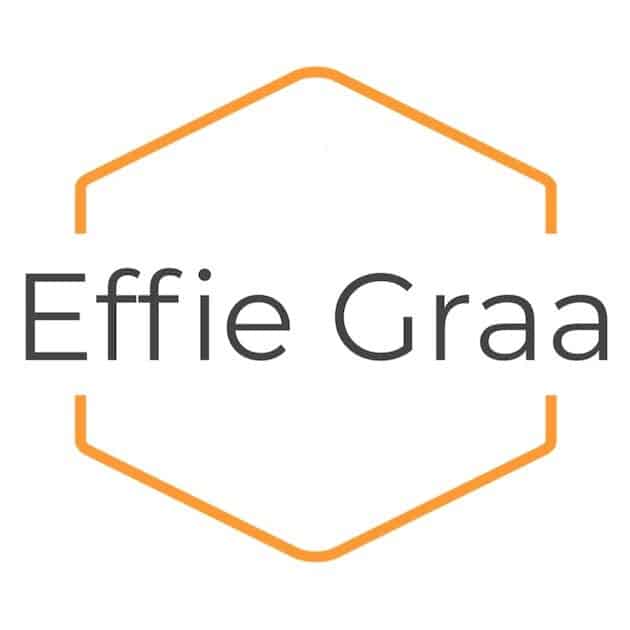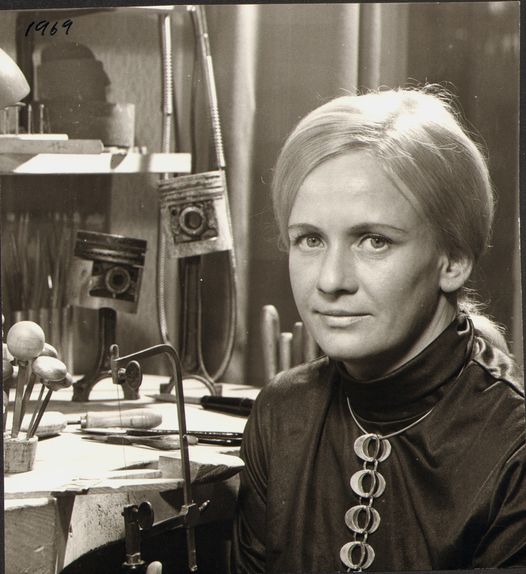
Theresia Hvorslev (1935-2024)
Love of nature expressed in extroverted Joie de Vivre
(This article about Theresia Hvorslev was first published in 2005 in “Modern Silver Magazine” edited by Marbeth Schon.)
Tradition
Swedish grace, beautiful fragile glass, natural simplicity and clean Scandinavian lines are some trademarks of Swedish modernism from the Scandinavian design era. Allthough the width of Swedish silver is not that well known outside of Scandinavia there are a few silversmiths who have a gained a reputition abroad, the biggest names in the 1950s and onward being Sigurd Persson and Torun Bülow-Hübe. The strong direct language of form of Theresia Hvorslev is at it’s best a counterpart to the thoughtful cool elegance of Torun. Her jewelry is outwardly pointed sparks of vitality. At the same time her elegant flowing lines remind us of Sigurd Persson.
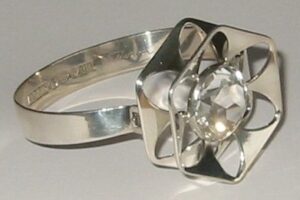
Background
Theresia Hvorslev, born 1935, was one of a group of talented students of the well known goldsmith Sven-Arne Gillgren, who was chief designer at the Swedish company GAB, G Dahlgren & Co. After graduating from Konstfackskolan (University Collage of Arts Crafts and Design) in Stockholm, she apprenticed at Georg Jensen in Copenhagen and at Bernadotte & Bjørn, the design studio of Sigvard Bernadotte and the Danish architecht Acton Bjørn.
Having gotten a flying start as a silversmith with several important awards, she was soon recognized as one of the most expressive and far reaching talents of modern Swedish jewelry. In addition to several museums in Scandianvia, she is also represented in the collections of the Cooper-Hewitt Museum in New York. Amongst other recognitions she holds three Diamonds International Awards.
Return to Sweden
After working in Germany and Denmark in 1955-60, Theresia returned to Sweden and her home town Lidköping, were she started her own workshop in 1964. In the early 1960s she also started her much appreciated work as a designer with the companies Alton and Mema. Her early designs are characterized by plain reflective surfaces and wing shaped forms which expresses the character of the metal.
In the 1970s her style evolves from finely measured, strict lines into voluptous shapes of vivid manifestations. Theresia herself says that the common thread through all of her work, although exposed through different shapes, is her love of the Nordic nature. Also typical is the Scandinavian relation to the materials as representing a character in it’s own right, not only as the carrier of the shape made by the artist.
Later works
Amongst Thersias later production are small silver sculptures made for the Swedish royal family, as well as a large sculpture in steel placed in her home town Lidkøping. Her most widely used product is a set of cutlery made for the SAS, Scandinavian Airline System, which was used for more than 30 years by the airline. Through the years Theresia Hvorslev has exhibited in museums and galleries all over the world, in places like New York, Rio de Janeiro, Tokyo, Moscow, Berlin, Zürich, London and Paris.
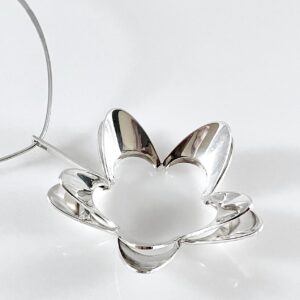
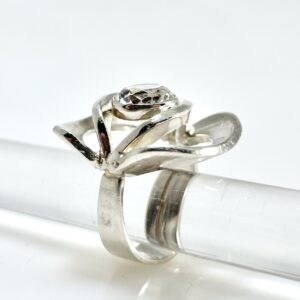
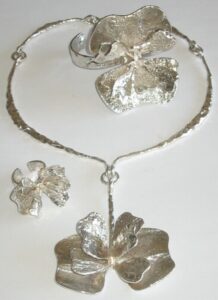
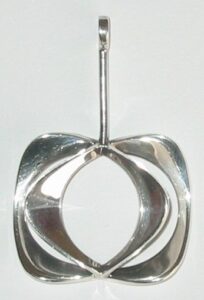
Table of Contents
Toggle